 Your new post is loading...
 Your new post is loading...
From LocalLabs to GoLocal24 to Everyblock, hyper-local news startups have consistently collided with foreboding economics: Narrow audiences tend to be small audiences, and small audiences are hard to monetize. But Ripple founder and CEO Razmig Hovaghimian, who previously made splashes with Embrace and Viki, thinks his latest project could build a more successful business model for hyper-local news — and several heavyweight funders are buying in. "I want [Ripple] to be a platform where storytellers get not only recognition and satisfaction from it, but compensation as well." -Razmig Hovaghimian EarlIer this month, Hovaghimian and his six-person team launched Ripple, a hyper-local news app that uses geo-location technology to help users discover the stories closest to them. Backed by Greylock Partners, Knight Foundation, MIT Media Lab director Joi Ito and other funders, Ripple has now launched in ten cities, including San Francisco and New York, and Hovaghimian says more locations are coming soon. source of enthusiasm for Ripple is two-fold: First, by combining geo-mapping technology with a voting system that allows stories to “ripple out” to a wider audience, Ripple creates an opportunity to produce hyper-local news at scale — a big step toward business viability....
What we need in the adblocking debate is a fresh perspective. Cue Birmingham website Paradise Circus, which has today released a browser extension to get rid of all that pesky journalism slowing down your daily advertising consumption: “The ads are really getting bogged down by all that news… what if we could just turn that off? Surely we could hand that 9.3% of processor time back to the stuff that matters… back to ad trackers, and flash popovers.” The extension strips out all the ‘content’ on the Birmingham Mail website so that advertising can load quicker....
The Seattle Times—and many publishers like them—is in an interesting place.
These are some of the big challenges that The Seattle Times, one of the largest daily newspapers in the Western U.S., has looked to solve. And solve they have!
With huge increases in social traffic and a smart and simple content workflow, The Times has made grown by leaps and bounds with its new social media strategies. Here’s a bit more about the tools and workflows that are helping them reach the next level on social media.
It’s easier to reach millions of people than ever, and great stories are doing just that.While a post on Buzzfeed or The New York Times is far likelier to get 5 million hits, a post on your personal blog can still accomplish that.It could hit the front page of Reddit or get shared tens of thousands of times on Facebook or get syndicated by a big publication.
Storytellers today have the best tools, the best distribution channels, and the largest audience in history....
Over the last decade David Carr poured buckets of advice on me. He counseled me through my first and second book. Helped me find a hidden path in The New York Times to become a columnist. But his most salient advice came in the summer of 2011, when my marriage at the time was falling apart.
I had come out to Los Angeles for a month to try and escape New York, where the life I had built there was crumbling. Upon my arrival in Hollywood I had taken over an empty desk in The New York Times L.A. Bureau. While the new environment was a temporary distraction, I often took quick walks downstairs where I burst into tears and felt sorry for myself, overwhelmed by what life was throwing my way....
In the age of social media democratization, news distribution is no exception. Nowadays journalists are competing head-to-head with brands and publishers for the most sharable content. The changing landscape of interconnected social news distribution and consumption also means that PR communicators need to strengthen their storytelling abilities and social angles to support their chances of media coverage in this competitive environment.
A recent survey by Edelman, NewsWhip and Muck Rack with an infographic sheds light on how PR folks can exploit these changes to get the most coverage possible. Here are 4 takeaways for PR profs....
The fast pace of the modern lifestyle—born from high-speed, hand-held, wireless connectivity—has not only changed the way we send, receive, and consume information, but has transformed the way journalists operate. This has led some of them to make a concerted effort to slow down and take a different tack.
“Slow Journalism is deep journalism—journalism that is informed by deep immersion in the story at ground level,” explains National Geographic Fellow Paul Salopek.
Salopek is conducting an experiment in this modern expression of a timeless human pursuit. He’s engaging with major stories of our time at the natural speed of his own footsteps as he retraces our ancestors’ migration from Africa to South America with his Out of Eden Walk. Along the way he’s not just looking for the latest news updates, he’s revealing the texture of the lives of people he encounters: nomads, villagers, traders, farmers, and fisherman who live within front-page stories, but normally don’t make the news themselves....
Attending a wedding in Ireland several years ago, Mark Little saw fellow guests looking at their phones, as they learned that Michael Jackson had died. Soon, the group was dancing to Thriller as a tribute to the late star. That dance, Little said, happened 15 minutes before the Los Angeles Times had even officially announced Jackson’s death. At that moment, he said he thought, “Wow, that’s the way news is being consumed.”
As the founder of Storyful — a global news agency that finds, collects, and verifies social-media content — Little has served as a leader of our massive information shift: How is news changing? How are stories changing? And what are the ethics involved as traditional media outlets transition from being the gatekeeper to being part of a worldwide reporting network in which every citizen can contribute to — or even completely tell — our world’s most important stories?...
In the last few weeks the shooting down of Malaysia Airlines Flight 17, the Ukrainian crisis and the situation in the Gaza Strip are monopolizing media attention....
Last Wednesday the Twitter account of the Associated Press posted this tweet: BREAKING: Dutch military plane carrying bodies from Malaysia Airlines Flight 17 crash lands in Eindhoven.
The news was verified, the tweet was not wrong from a grammatical point of view, however there was an ambiguity whereby if the word 'crash' is read as a part of the verb 'crashland' rather than as a noun, the meaning becomes the plane which was carrying the bodies of the passengers of the MH17 had crashed. A little later, the account clarified the misunderstanding, but the damage was done with the tweet wrongly interpreted and already shared by thousands of people, sparking the most varied reactions.
The episode has prompted Megan Garber of The Atlantic to write a piece about the use of "breaking news" designation. According to Garber, it was not a necessary piece of news to add to many others re-launched as indispensable 'breaking news' (a plane has landed, after all: it is news in an article, in a context, but not breaking news itself). It is useless to engulf the news ecosystem. "The term 'breaking' is quickly losing its meaning," Garber explains, in agreement with what Felix Salmon stated during the last edition of the International Journalism Festival....
When it comes to media work and the teaching of it, I loath the phrase, the dark side. It goes something like this: You teach journalism and PR in the same department? I stay away from the dark side.
Enough. Some journalists — and journalism educators — have an outsized ego about all things journalism and a palpable disdain for all things not. They made it a religion to ignore anything related to the business side in defense of the purity of news.
It was easy to be holier than thy marketer when some news organizations were turning year-over-year profits that would send drool down the chin of an oil and gas executive. Not today.
The New York Times Innovation Report has been ripped to pieces by many brains in the media world but the issues are the familiar TBD framework I work with, namely Technology (can/does it do what is needed?), Behaviour (will people do what we need/want?) and Data (will enough people do what we need?).
After ploughing through it, despite a slightly depressing overtone, I am confident the New York Times will pull through…the industry can’t afford it not to (read: have an R&D budget). The very fact it is doing a report of this sort (especially considering who asked for it) means they are focusing and clear about their future problems – success therefore is predicated on hard decisions being made about some very core issues (staff etc).
A few things stood out when I read the report...
FiveThirtyEight is a data journalism organization. Let me explain what we mean by that, and why we think the intersection of data and journalism is so important.
If you’re a casual reader of FiveThirtyEight, you may associate us with election forecasting, and in particular with the 2012 presidential election, when our election model “called” 50 out of 50 states right.
Certainly we had a good night. But this was and remains a tremendously overrated accomplishment....
The other reason I say our election forecasts were overrated is because they didn’t represent the totality, or even the most important part, of our journalism at FiveThirtyEight. We also covered topics ranging from the increasing acceptance of gay marriage to the election of the new pope, along with subjects in sports, science, lifestyle and economics. Relatively little of this coverage entailed making predictions. Instead, it usually involved more preliminary steps in the data journalism process: collecting data, organizing data, exploring data for meaningful relationships, and so forth.
Data journalists have the potential to add value in each of these ways, just as other types of journalists can add value by gathering evidence and writing stories....
Journalists have to simplify material for a general audience. Is there a technological fix?Scientists and the journalists who cover them are locked in an “eternal tug of war,” Sabine Hossenfelder writes. The journos feel they have to elide detail so a general audience can read them. The scientists feel the resulting “knowledge transfer” to readers is pitifully low. Hossenfelder illustrates the problem with a series of graphs, like this one...
|
Six years ago, at a high school event in suburban New Jersey, Michael Shapiro was covering the story for a hyper-local news site he had founded two years earlier when he spotted a journalist from an established local print newspaper from the same town. “I extended my hand to shake hers,” he recalls, “and she turned around and walked away. People who saw it, their eyes opened wide. They couldn’t believe it.” Those were the early days of Shapiro’s foray into hyper-local news. He was a former lawyer who was building a network of websites covering towns in New Jersey, and some of the state’s old-guard journalists, didn’t like it. Getting the cold shoulder from them, he says, was not unusual. “They saw us as a threat,” says Shapiro. “It was also a matter of, ‘ Who are you to come into my town,’ as if it’s their town.” But things have changed considerably since then. Now, Shapiro presides over a rapidly expanding network of 51 hyper-local franchises dotted throughout New Jersey and, more recently, New York state. (Two more just signed on and will launch this spring. A brief expansion into Pennsylvania failed.)...
Gimlet isn’t alone here; there other prominent examples of media companies with an emphasis on long-form that are attracting millennials – VICE and Netflix docu-series come to mind. (It should be noted, even BuzzFeed, the king of snackable content, has invested in and attained recent success with long form.) So why is this? What are these companies doing that allow them to build large millennial audiences against the conventional wisdom that shorter is better? For your consideration, here are three reasons why long-form is actually the ideal format to reach millennials....
Business Wire’s 2015 Media Survey is now available and it offers startling results about how journalists see the future of news media. The landscape of media is changing – new platforms and new styles. The New York Times is an institution but it didn’t start off as one. How will we be referring to BuzzFeed decades from now? Will the two seemingly different lines of media style intersect at some point in the future? These questions are part of the debate regarding the future of media and journalists are split.
According to an article published in The Guardian back in 2013, BuzzFeed is described as an, “irreverent US news and entertainment website taking the social web by storm” and investor Kazz Lazerow, co-founder of Buddy Media, described the website as “the defining media company for the social age.”
Only a few years ago, BuzzFeed represented the wave of change the digital age brought upon news media and that wave has only continued to grow. Now, BuzzFeed is challenging traditional forms of news, jockeying to become the standard of journalism.
When asked to decide between The New York Times style and the BuzzFeed style, journalists made clear that while the classical form isn’t going anywhere, it will have to share its place at the top....
Five years after I put away my laptop, digital recorder, video camera and Comrex codec, and began doing all my field reporting on an iPhone 3GS, mobile journalism continues to transform the way news is covered — for better or worse.
Since February 2010, when I began my #iphonereporting experiment at WTOP-FM — Washington’s all-news radio station — technology has evolved, along with journalists’ job descriptions. And WTOP’s focus changed from being the top-rated radio station to being a multi-platform digital news organization....
News organizations are meant to play a critical role in the dissemination of quality, accurate information in society. This has become more challenging with the onslaught of hoaxes, misinformation, and other forms of inaccurate content that flow constantly over digital platforms.
Journalists today have an imperative — and an opportunity — to sift through the mass of content being created and shared in order to separate true from false, and to help the truth to spread.
Unfortunately, as this paper details, that isn’t the current reality of how news organizations cover unverified claims, online rumors, and viral content. Lies spread much farther than the truth, and news organizations play a powerful role in making this happen....
WASHINGTON, DC – Jan. 13, 2015 – Out of Eden Walk, a seven-year project by reporter and National Geographic Fellow Paul Salopek, will experiment with new digital storytelling techniques and share lessons to help advance the field of journalism....
Out of Eden launched in January of 2013 in Ethiopia, when Salopek, a two-time Pulitzer Prize winner, began an epic journey to retrace on foot and with minimal logistical support the path of early human migration, covering 21,000 miles. Since then, Salopek has connected with wide audiences and generated a huge social media following as well as dedicated supporters. More than 200 schools worldwide have signed up for Out of Eden Walk online curriculums....
A meal out with Bourdain typically involves three things. There will be engaging conversation, possibly touching on such subjects as the essays of Michel de Montaigne, 1920s surrealist films, and mixed-martial-arts combat. There will be booze, although perhaps in more modest quantities than his reputation suggests. And there will be food--some strange, all carefully prepared, and a certain amount involving animal innards that seem better suited to ninth-grade biology class than the dinner table.
Bourdain, 58, is a foodie explorer who has spent years trekking around the planet while fearlessly tucking into all manner of exotic fare, from months-old rotten shark meat in Iceland to a still-beating cobra heart in Vietnam. "He's the Indiana Jones of the food world," says his close friend Eric Ripert, chef and co-owner of New York institution Le Bernardin. "He is the smart guy who knows food and is going to take us with him on an adventure....
New storytelling forms inspire us.
...We should not forget that producing multimedia content is as much about mindset as skills. Imitators of “Snow Fall” might mistakenly add bells and whistles that do nothing to enhance the story itself.
Multimedia storytelling continues to evolve as more journalists experiment with the possibilities opened up by new digital tools and techniques. I recommend three more recent examples that thrust the form in new and compelling directions...
For a Delacorte Lecture I gave in 2012, I described what I viewed as a headlong rush toward digital self-destruction in the publishing and journalism world.In some ways, things have only gotten worse. It is a frightening sign of the times that, to save money, New York magazine, an iconic weekly, has gone biweekly, and Ladies’ Home Journal, a monthly founded in 1883, has switched to quarterly publication. I am even more disturbed to learn that my old college paper, the Columbia Daily Spectator, wants to go to weekly publication and devote more energy to its so-called digital focus. Google continues its scorched-earth march through copyright territories once controlled by publishers and writers, while Amazon puts more bookstores out of business and buys The Washington Post. And then there’s the very well reported story in the March/April issue of the Columbia Journalism Review, “Who cares if it’s true?”
The New York Times has said it is planning to shut down or absorb as many as half of its existing blogs, with the hope that those skills can become more widespread inside the newspaper as a whole — but will they?
There are those who proclaim the rise of digital media is finally giving way to a “golden age of journalism.” And then there are the pessimists who see little but doom or gloom.
And, to be fair, there’s ample evidence for each view. Just check out the Pew Research Center’s 11th annual State of the News Media report that’s being issued today. This year’s study goes in-depth into the revenue picture for news, the rise of digital reporting and growth of digital video. In many ways, this is the best of times and the worst of times for the industry.
You can read the full report at the Pew website or check out a few handy charts here. Meanwhile here’s the speed-read version....
Last July, The Washington Post launched a live video channel that its president proclaimed would be “the ESPN of politics.” Instead, PostTV turned out to be more like a public access show. Within five months, the live content had vanished and the “channel” became little more than a clearinghouse for pre-taped video packages and recycled press briefing footage, along with the occasional original report.
What the Post learned in its video flop in 2013 is what The New York Times, The Wall Street Journal, POLITICO and other large news organizations had discovered in years prior: Creating quality live television is expensive — the Post invested millions of dollars and dozens of staffers to Post TV — and much harder than it looks. The end result didn’t interest readers — or advertisers....
|



 Your new post is loading...
Your new post is loading...

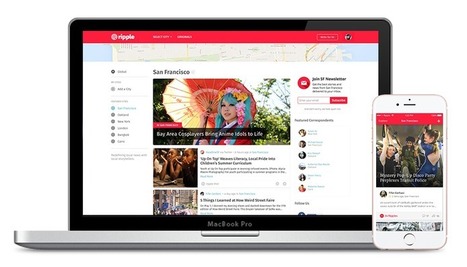


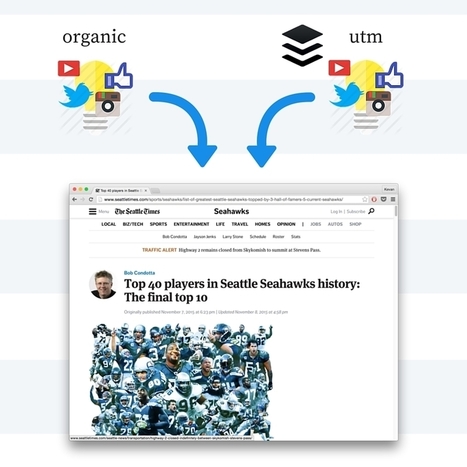


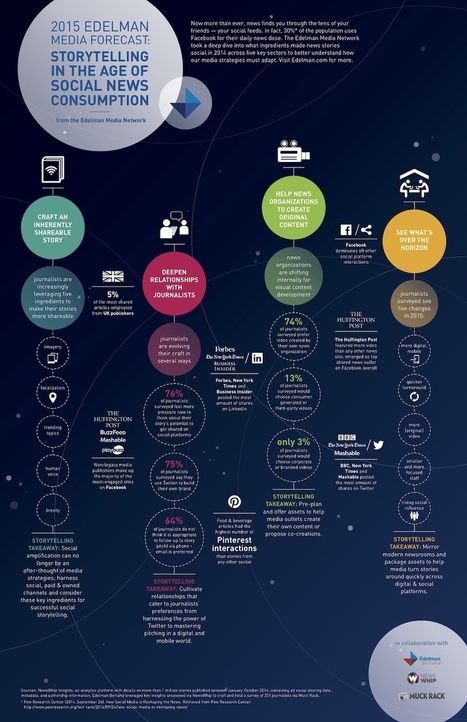





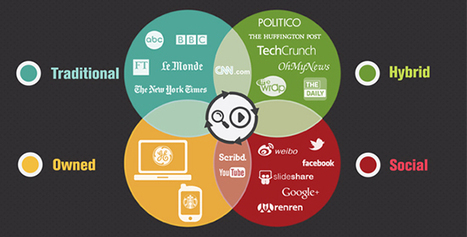

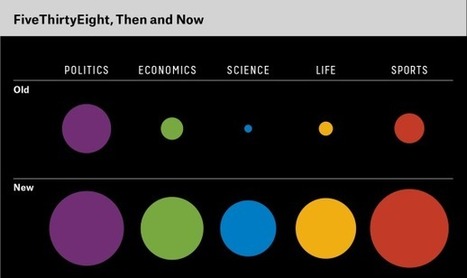

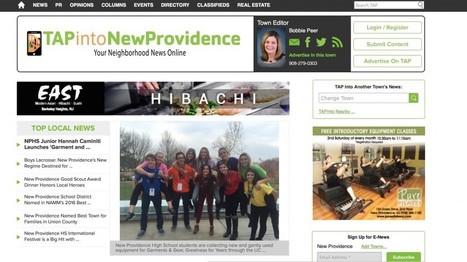
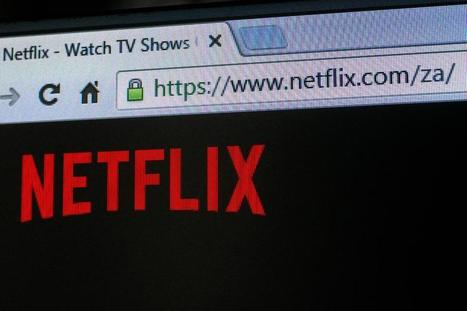
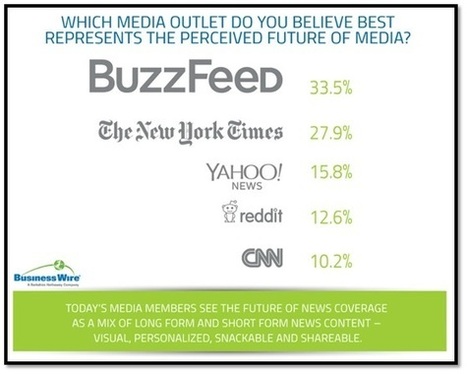




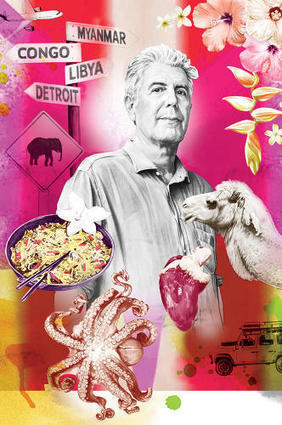
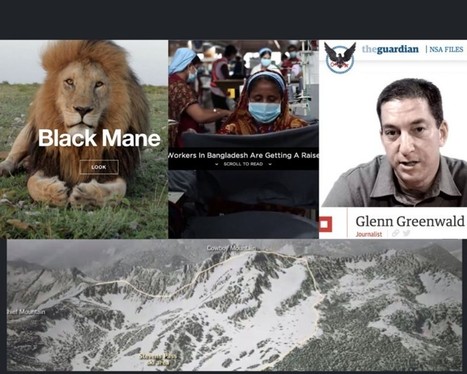
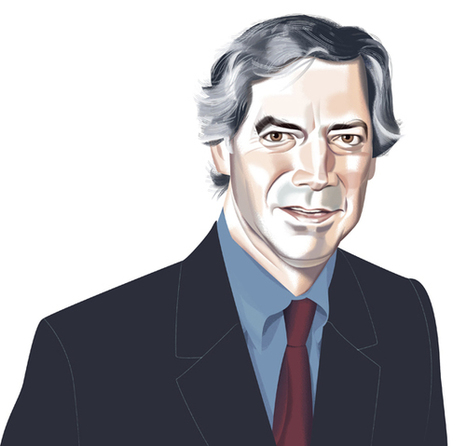







Could Ripple find a way to make local news profitable? VCs think so.